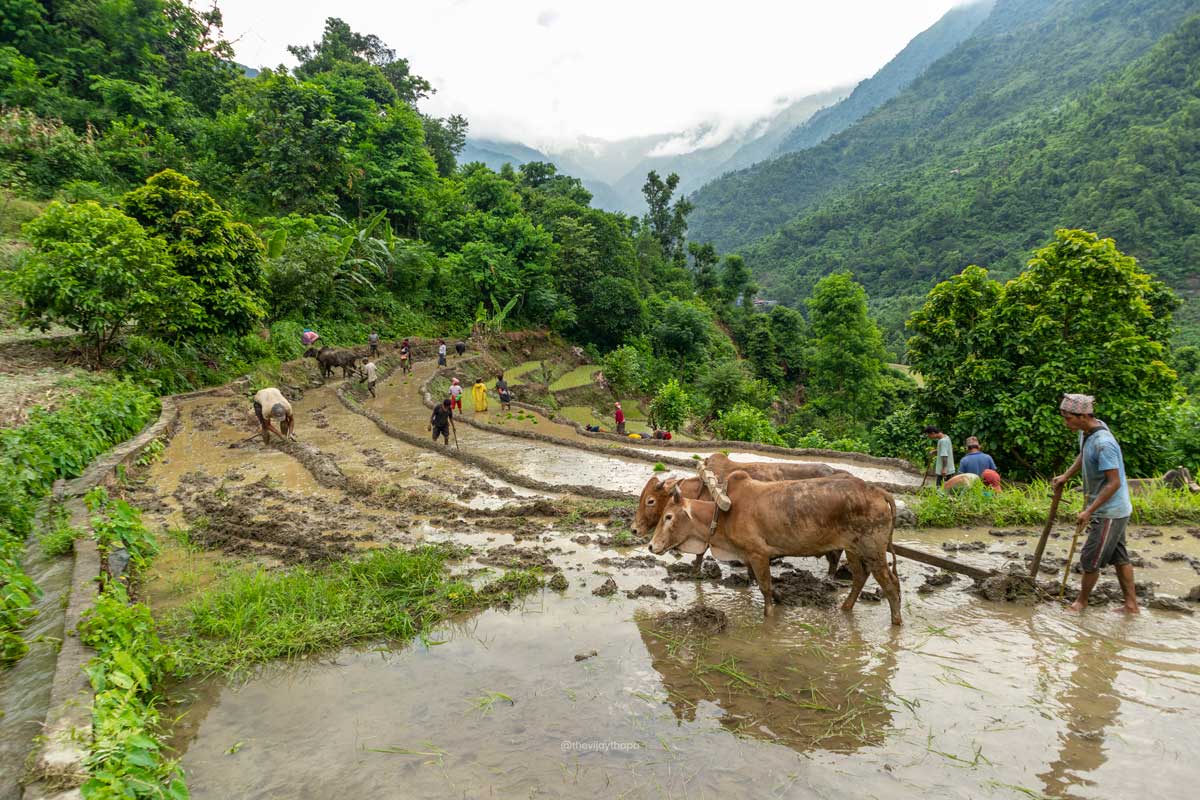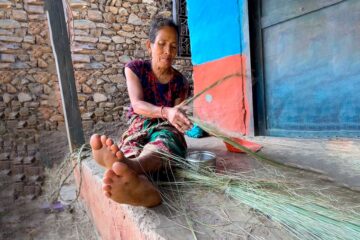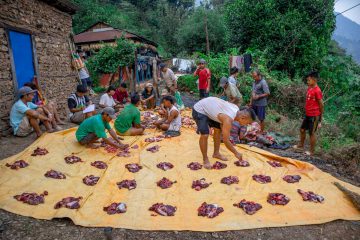Have you ever heard of a system or a place where people don’t charge (take) money for work?
In rural villages like Khasrang in Nepal, people often don’t take money for work instead they demand work in return. And this system of work for work is called Parma.
The system has been used in traditional villages in Nepal from the ancient times and it’s still alive mostly in rural villages.
How Parma Works?
So, in the Parma system people demand work for work not money.
For example, if 20 people come to plant rice in my field, then I’ll have to go to plant rice or similar field work for those 20 people.
Those 20 people won’t accept money from you.
You’re debted to those 20 people in Parma. And you will pay the Parma only when you go to work for them.
The system is not only limited to people. If a person brings a pair of Ox to plough your field, then you’re indebted to 3 Parma (people). Even a pair of Ox are counted as 2 people. So a pair of Ox with the one ploughing the field is equal to 3 people.
Thus, you’ll only repay his Parma (debt) by working on his field for 3 days (or 3 Parma).
Also if one came to work for you only in the morning or evening, then you can do the same to repay the Parma (no need to work for full day).
What happens if you don’t go to work for those people?
If you call people for your work but didn’t go to work for them (and try to pay them forcefully), then from next time no one will come to work for you.
And in the rural villages, your neighbours and local peoples are the only ones who will help in any work (farm work or any other activities).
There is no chance of getting people from other villages to work for you as it gets expensive.
But in case if the family is helpless, they would follow another system instead of Parma where they won’t need to go work for others.
A Reflection In The Development of Parma System
A century ago, not all people had money. Most survived on the strength of their muscles.
Even if you had money, there were no shops like today to get easy access to foods like Noodles, Momo and Chow Mein. They had to grow their own food on the farm.
So the muscles or physical strength was more important than money for survival.
In the beginning, when the farms were small people could do all the tasks by their own family members.
But later people started increasing the farmlands as the family grew. And to work in these fields, their family was not enough. It took more time and sometimes not being able to plant or harvest crops caused loss as well.
So they needed the help of their neighbours and other peoples from their village.
And since physical strength was more valuable than currency at that time, they decided to exchange Work for Work, and the Parma system started.
But now with the development in transportation, technology and migration, the Parma system is on the verge of extinction.
People leaving the village causes the lack of human labour, introduction of technology in farmworks requirements of people decreases, and the easy availability of food when you have money also decreases the dependability of other people (or neighbours) for survival.
Thus, such historical systems can only be experienced in rural traditional villages like Khasrang in Nepal but not sure for how long.
Impact of Parma system in Traditional Communities of Nepal
The Parma system, a form of reciprocal labor exchange, had several significant impacts on the rural villages and its evolution:
- Social cohesion and interdependence: By fostering mutual reliance and cooperation among community members, the Parma system strengthened social bonds and a sense of shared responsibility.
- Risk mitigation: In a subsistence agricultural setting, the Parma system has helped farmers manage the risks associated with labor shortages during peak seasons, ensuring timely completion of critical tasks like planting and harvesting.
- Equity and resource distribution: While not a perfect equalizer, the Parma system has promoted a degree of equity in access to labor resources, as those with fewer resources could still participate in the system and receive assistance.
- Conservation of traditional practices: The Parma system’s emphasis on collective labor and traditional agricultural methods have helped preserve traditional knowledge and skills related to farming and other rural livelihoods.
Overall, the Parma system played a complex role in the social, economic, and cultural development of the rural communities in Nepal.
So, in short “Parma is a Work for Work system of trust that provided essential safety nets and promoted cooperation”.




